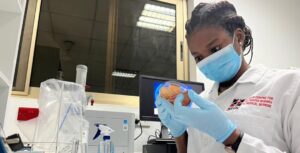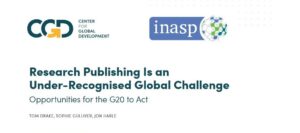INASP brings Kudos to Journals Online to extend visibility of research publications from developing countries
INASP brings the latest technology and trends in research communication to its Journals Online (JOLs) project through its new venture with Kudos, a web-based service that helps researchers and associated institutions maximize the visibility and impact of their published articles.
This development, after the recent introduction of iThenticate software to the JOL project, means that the authors of articles on the NepJOL, BanglaJOL and SLJOL continue to be a part of cutting-edge developments in the publishing industry.
Sioux Cumming, Programme Manager, Journals Online Project at INASP, is positive about how the authors will benefit from Kudos in terms of getting their articles to stand out globally. “I believe that by registering our JOLs platforms with Kudos, it will encourage researchers to take responsibility for maximizing the usage and citation of their publications,” says Sioux.
“Kudos motivates researchers to do more outreach around their work, by gathering together a range of publications metrics and mapping these against their communication efforts,” explains Charlie Rapple, Sales & Marketing Director and Co-Founder of Kudos. “In this way, we’re able to show researchers that simple and quick efforts can have a big impact on the extent to which their work is found and read.”
Kudos is not only useful for authors but also for institutions and funders trying to find out the impact of the research that they fund and for publishers who work with author communities to increase their publication performance.
Kudos is for researchers who want assistance with increasing usage of and citations to their publications. Kudos is also for institutions and funders looking to increase the impact of the research that they fund, and for publishers wanting to develop closer relationships with their author communities and increase publication performance.“With the use of Kudos, we at INASP can get information on articles being shared by authors of articles on the JOL platforms, track how they use Kudos and also provide information to authors on these so that they can evaluate their efforts,” adds INASP’s Sioux.
“By encouraging researchers to manage their communications centrally, through the Kudos toolkit, we can make it easy for their publishers, institutions and funders to see how, when and where researchers communicate,” continues Charlie of Kudos. “This makes it easier for publishers to amplify, learn from and provide guidance around researcher communications. Kudos is only 18 months old but has already gathered enough data to provide useful insights to help publishers optimize their own marketing and PR communications.”
About INASP
INASP (www.inasp.info) is an international development charity working with a global network of partners to improve access, production and use of research information and knowledge, so that countries are equipped to solve their development challenges.
About Kudos
Kudos has 50 publisher customers around the world, including Wiley, Taylor & Francis, Cambridge University Press, the Royal Society, the Royal Society of Chemistry, and the American Academy for the Advancement of Science. The company is also working with 13 institutions including the current and previous “UK University of the Year” (Universities of Birmingham and Huddersfield). Early analysis of Kudos data indicates that the existence of plain language explanations can substantially increase the likelihood of users progressing to read the full text of an article. Kudos was named Best New End User Product at the 2014 Charleston Advisor Readers’ Choice Awards and awarded the 2015 ALPSP Award for Innovation in Publishing. It has been named in Outsell’s “Ten to Watch” for two consecutive years.





